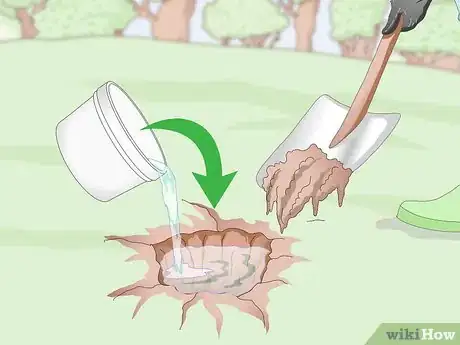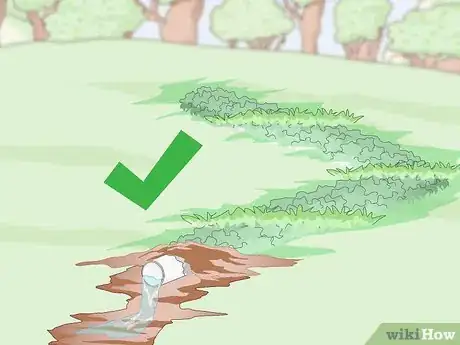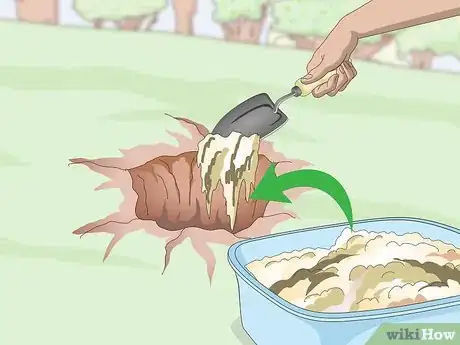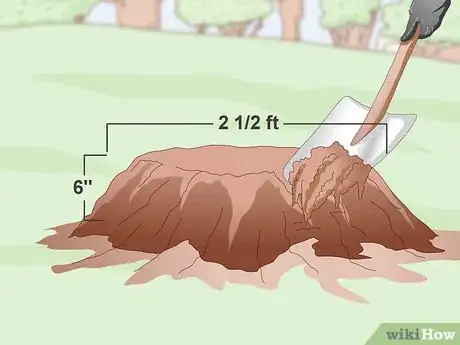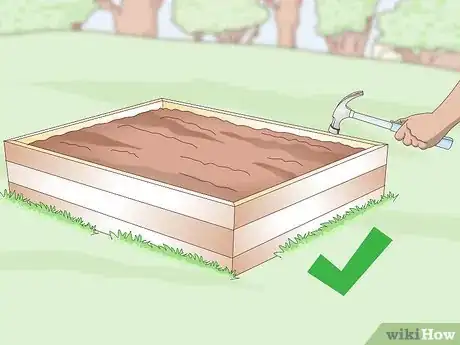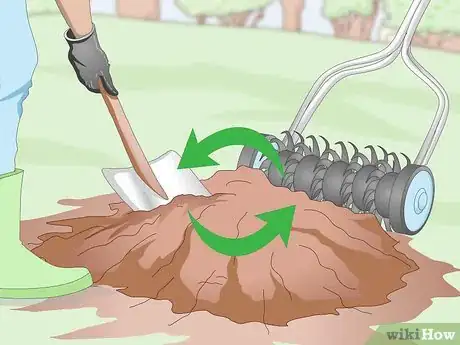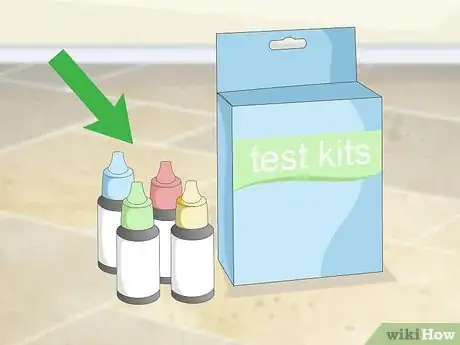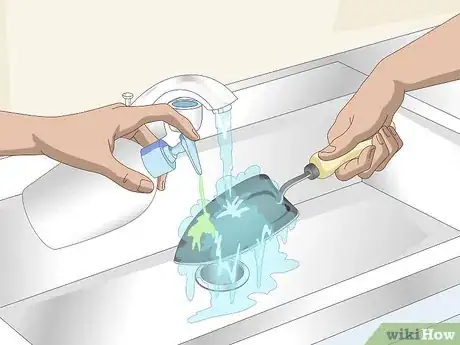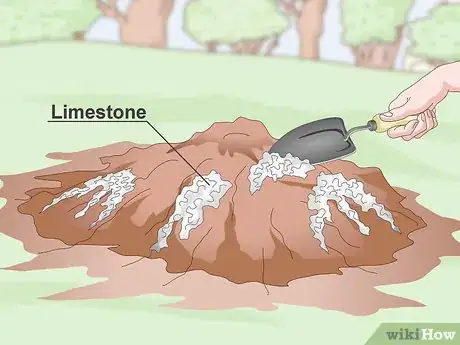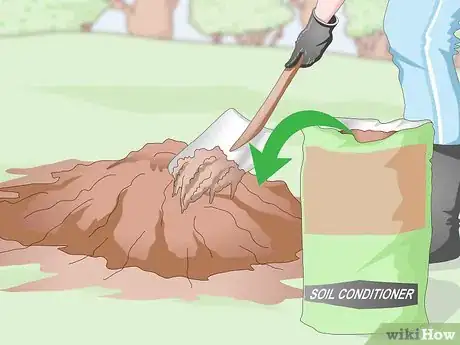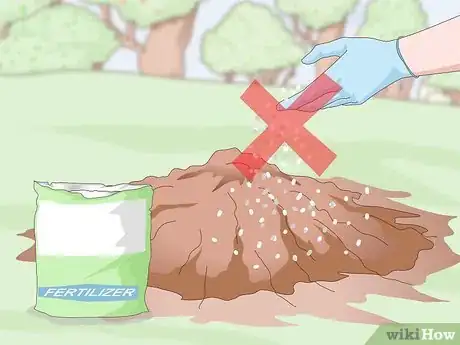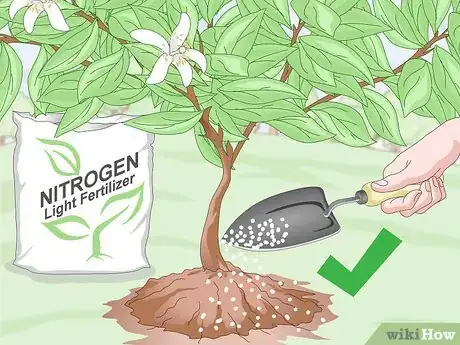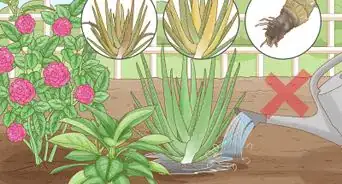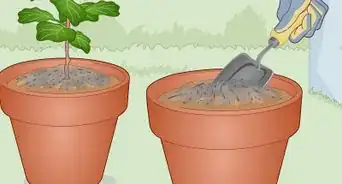This article was co-authored by Lauren Kurtz. Lauren Kurtz is a Naturalist and Horticultural Specialist. Lauren has worked for Aurora, Colorado managing the Water-Wise Garden at Aurora Municipal Center for the Water Conservation Department. She earned a BA in Environmental and Sustainability Studies from Western Michigan University in 2014.
There are 7 references cited in this article, which can be found at the bottom of the page.
wikiHow marks an article as reader-approved once it receives enough positive feedback. In this case, 89% of readers who voted found the article helpful, earning it our reader-approved status.
This article has been viewed 127,671 times.
There's nothing better than the delicious, refreshing taste of fruit plucked from your very own backyard orchard. Once your fruit trees are established, they'll be relatively easy to care for and maintain. But first things first! Before you get to planting, you'll need to improve soil consistency, drainage, nutrient composition, and pH balance. It's less work than it sounds, and proper soil preparation will give your fruit trees the best chance of producing a delicious crop.
Steps
Improving Soil Consistency and Drainage
-
1Check soil drainage. Break out your shovel and dig a hole in your planting area. You only need to go down about a foot (30.5 cm). After that, fill the hole with water. The water should drain within 3 to 4 hours, at which point you should fill the hole again with water.
- If the hole does not drain within 3 to 4 hours during the first and second water filling, your soil won't likely drain well enough to support a fruit tree.
- If your hole drains completely in less than 3 hours, the soil may be too sandy. To improve this, add organic matter to the soil.
- Soil that drains poorly can be improved with a drainage system, planting mounds, or raised beds.[1]
-
2Install French drains for slow draining soil. A layer of thick, sticky clay underneath your topsoil could be clogging things up. Removing this layer isn't really a cost effective option, so a DIY French drain system may be the best solution for slow draining soil.
- French drains are a kind of underground drainpipe installed to improve drainage. Once they're put in and the grass regrows, they'll be all but invisible.[2]
- Generally, French drains are installed by digging a sloping trench through areas of poor drainage to a drainage area. A drainage pipe and coarse backfill, like gravel, are inserted in the trench, then covered with dirt.[3]
Advertisement -
3Mix in organic matter for fast draining soil. Soil that is sandy or coarse may drain too quickly for your trees to receive enough water. Use well-composted organic materials in the backfill for tree holes to increase moisture retention while the roots establish.
- Rent or buy a rototiller from your local home or garden center to easily mix compost into your existing soil.
- After mixing in organic materials thoroughly, test the soil drainage again (water should drain in 3 to 4 hours).
- The amount of organic materials you'll need to add to the backfill will depend on the severity of your drainage problems.
-
4Protect the root crown of your trees with a mound. The upper part of the root system slightly underneath the soil line is called the root crown. This part of the tree is vulnerable to excess moisture. By raising the planting area with a mound, the root crown will be better protected.
- Mounds are made by backfilling soil into holes to create a gentle slope rising to the tree in the center. The tree's soil line should be 6 to 12 in (15.2 to 30.5 cm) higher than surrounding soil.
- For mounds that are 6 in (15.2 cm) high, you should also use a width of at least 2.5 ft (.76 m).
- For mounds that are 10 or 12 in (25.4 or 30.5 cm) high, use a width between 3 and 4 ft (.9 and 1.2 m).
- Avoid making steep slopes with your mounds. Gentle slopes will prevent the soil from eroding.[4]
-
5Build a raised bed to protect root crowns if you've got the tools. A raised bed is a simple wooden box that holds in soil around the tree, keeping its soil line high. This pretty much eliminates the erosion that will eventually happen with mounds.[5]
-
6Break up soil at the planting site for better root growth. Soil that is packed tightly will resist root growth. Your trees' roots will establish better in an area widely cultivated with a shovel and rototiller. Do not cultivate lower than the recommended planting depth for your tree.
- Holes for trees, generally, should be double the width of the roots. The depth shouldn't be greater than the root ball, except when the soil is really compacted, then you'll want a little extra room.
- If you notice a lot of clay while breaking up the soil in the planting site, use a shovel to cut channels into the sides of the hole. This will encourage outward root growth.[6]
Testing Soil Nutrients and pH
-
1Purchase a soil testing kit. These can be bought at many hardware stores, home centers, or even some general retailers, like Walmart and Target. Some tests include strips, vials, and mild reagents to test your soil and interpret the results. Other tests send samples to labs for analysis, and some kits contain materials for both home and lab testing.
-
2Test your soil in fall or early spring. Technically, you can test your soil whenever you feel like it, but choosing your moment has its benefits. Testing in fall or early in spring will give you time to make adjustments to your soil before planting.
- Also, shoot for dry conditions when testing your soil. Moisture in your sample can sometimes throw readings off.[7]
- If you live in a part of the world where your growing season doesn't start in spring and end in fall, perform your test instead at either the start or end of your growing season.
-
3Clean tools before using them to take a sample. A mild soap and water will be more than enough to prepare your tools. Rinse all soap thoroughly from the tools, as it can give a false reading. Dry the tools with paper towel, and you're ready to take a sample.
- Similarly, wash, clean, and dry a bucket for harvesting samples. Lay out some newspaper on a flat surface in an out-of-the-way location. This is where you'll set out samples to dry.[8]
-
4Take samples from the planting area. You want a good cross-section of the planting area. Dig five holes spaced out evenly around where you'll be planting. Each hole should be 6 to 8 in (15.2 to 20.3 cm) deep. Harvest soil samples by cutting a half-inch (1.3 cm) slice from the side of each hole.
- Harvested soil goes right in the bucket. When you've harvested all your samples, mix them together. When the soil is well mixed, lay it out on the newspaper you prepared earlier to dry.
- When necessary, use the sample container that came with your kit to collect the required amount of soil (usually, it's about a pint).
- pH tests often only require you to add a reagent to a sample. The interaction between the sample and reagent should create a vivid change in color, indicating the pH level according to the kit's pH color chart.[9]
Fertilizing and Balancing pH
-
1Reduce soil acidity when necessary. Acidic soil can take a long time to really balance out. This can be done by mixing limestone (or garden preparations with limestone in them) in with your soil. Add limestone in fall every year for a few years and you should notice an improvement.
- Unfortunately, most of the eastern half of the US has acidic soil. This doesn't necessarily mean your soil won't support fruit trees, but it may benefit from being amended with limestone.[10]
-
2Raise the pH of soil that's too basic. Sometimes referred to as “alkaline soil,” soil like this is found in much of the central and southwestern US. Add a soil conditioner to your dirt, like one containing sulfur or gypsum.
- Soil conditioners are available at most hardware stores and home centers. Try Sphagnum peat moss as an organic alternative.
- If you have access to compost materials, apply these regularly to decrease alkalinity. Take readings as you balance to make sure you don't make the soil too acidic.[11]
-
3Avoid fertilizing before planting. It's very easy to overload the root systems of fruit trees. Their roots are sensitive to direct exposure to fertilizer. Never add fertilizer or manure directly to the hole in which you'll be planting a fruit tree.[12]
- Fertilize from the top of the soil after the first pruning of the season and as close before budding as possible.
- If you tree starts budding sooner than expected, you can still fertilize up through June. Late summer and fall will put trees at risk of frost damage.[13]
-
4
Expert Q&A
-
QuestionWhat soil pH level do citrus fruit trees require?
 Lauren KurtzLauren Kurtz is a Naturalist and Horticultural Specialist. Lauren has worked for Aurora, Colorado managing the Water-Wise Garden at Aurora Municipal Center for the Water Conservation Department. She earned a BA in Environmental and Sustainability Studies from Western Michigan University in 2014.
Lauren KurtzLauren Kurtz is a Naturalist and Horticultural Specialist. Lauren has worked for Aurora, Colorado managing the Water-Wise Garden at Aurora Municipal Center for the Water Conservation Department. She earned a BA in Environmental and Sustainability Studies from Western Michigan University in 2014.
Professional Gardener Citrus trees require a pH between 5.5-6.5. They will not grow well in soil pH above 7.0.
Citrus trees require a pH between 5.5-6.5. They will not grow well in soil pH above 7.0. -
QuestionWhy do the leaves turn dry, brown and fall off?
 Lauren KurtzLauren Kurtz is a Naturalist and Horticultural Specialist. Lauren has worked for Aurora, Colorado managing the Water-Wise Garden at Aurora Municipal Center for the Water Conservation Department. She earned a BA in Environmental and Sustainability Studies from Western Michigan University in 2014.
Lauren KurtzLauren Kurtz is a Naturalist and Horticultural Specialist. Lauren has worked for Aurora, Colorado managing the Water-Wise Garden at Aurora Municipal Center for the Water Conservation Department. She earned a BA in Environmental and Sustainability Studies from Western Michigan University in 2014.
Professional Gardener This is a regular occurrence for deciduous trees. The trees are preparing to go dormant for the colder season.
This is a regular occurrence for deciduous trees. The trees are preparing to go dormant for the colder season. -
QuestionCan I put cow dung as fertilizer for my mango tree?
 Community AnswerPure manure can be harsh on the roots of fruit trees; generally it should be composted beforehand. Young mango trees are prone to over-fertilization, but can benefit from fish based fertilizers. Look for fertilizers high in potassium and iron (chelated) for grown trees.
Community AnswerPure manure can be harsh on the roots of fruit trees; generally it should be composted beforehand. Young mango trees are prone to over-fertilization, but can benefit from fish based fertilizers. Look for fertilizers high in potassium and iron (chelated) for grown trees.
Things You'll Need
- Garden tools (shovel, rake, hoe)
- Rototiller (optional)
- Soil testing kit
References
- ↑ http://www.davewilson.com/home-gardens/growing-fruits-and-nuts/planting-your-backyard-orchard
- ↑ https://www.houselogic.com/organize-maintain/home-maintenance-tips/exterior-french-drain-system/#
- ↑ http://www.diynetwork.com/how-to/outdoors/landscaping
- ↑ http://www.davewilson.com/home-gardens/growing-fruits-and-nuts/planting-your-backyard-orchard
- ↑ http://www.davewilson.com/home-gardens/growing-fruits-and-nuts/planting-your-backyard-orchard
- ↑ http://homeorchard.ucdavis.edu/8048.pdf
- ↑ https://www.lowes.com/n/how-to/test-and-improve-your-soil
- ↑ https://www.lowes.com/n/how-to/test-and-improve-your-soil
- ↑ https://www.lowes.com/n/how-to/test-and-improve-your-soil
About This Article
To prepare soil for fruit trees, you should test the soil nutrients and pH with a kit from a hardware store or home centre. If your soil is acidic, you can balance this out by mixing in limestone every fall for a few years. Conversely, if your soil is alkaline, you should add soil conditioner, like one containing sulfur or gypsum, or compost materials if you have them. Additionally, always avoid fertilizing before planting, as the roots of fruit trees are particularly sensitive. For more tips from our Horticultural co-author, including how to test and improve soil drainage, read on!
